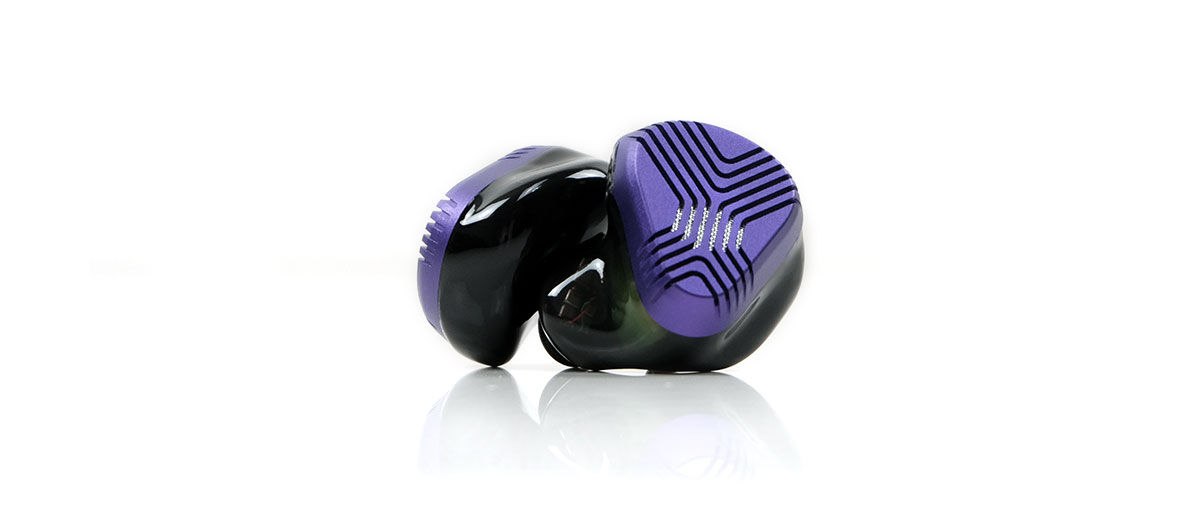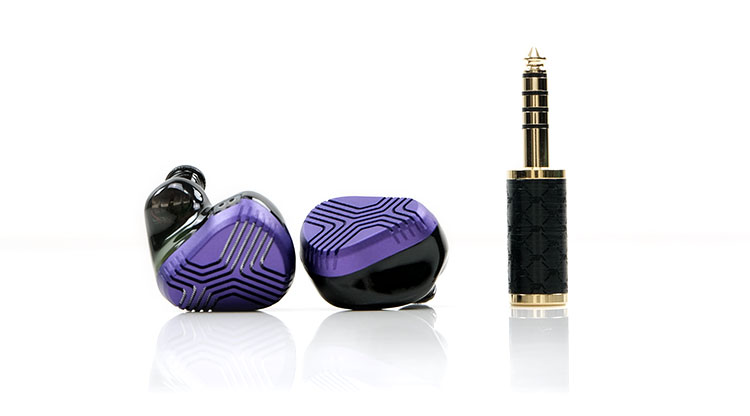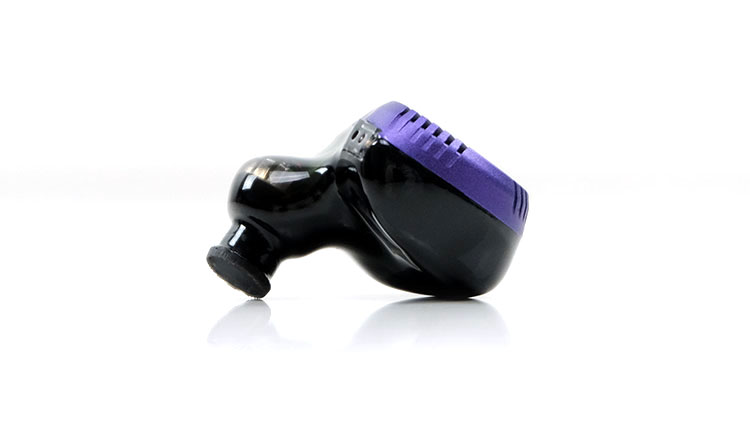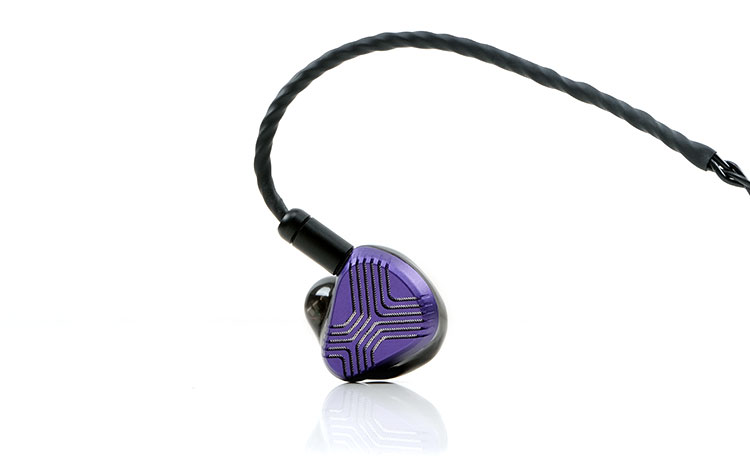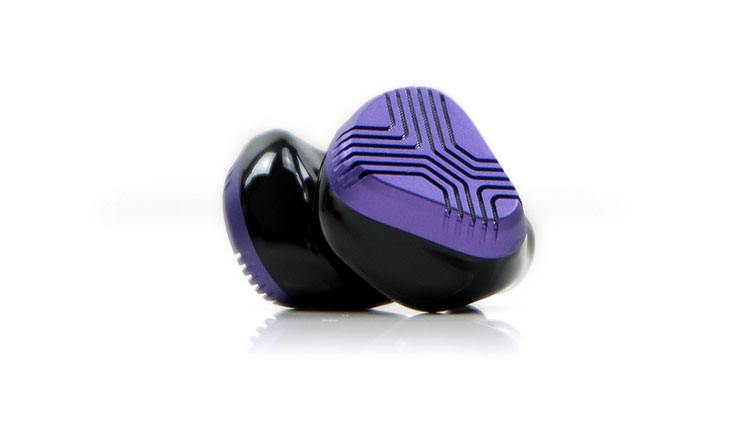The Vision Ears EXT is a TOTL hybrid universal IEM featuring a dual dynamic driver and a quad electrostatic driver combo. It is priced at €2650.
Disclaimer: The Vision Ears EXT sent to us is a sample in exchange for our honest opinion in this review. We thank the team at Vision Ears for giving us this opportunity.
To read more about Vision Ears products we have featured on Headfonics click here.
Note, this 2-page review follows our new scoring guidelines for 2021 which you can read up on here.
EXT stands for ‘Elysium Extended’ which should give you a fair idea of what this new high-end monitor from Vision Ears is all about.
It takes some of the best attributes of probably my most referenced customized IEM from the last two years and tweaks the driver configuration for something quite different. You now get a brand new dynamic driver replacing that BA for the lows to go alongside that excellent 6mm midrange dynamic driver.
More than that, this is an entirely new quasi-custom design with a unique yet universal fitting so that means you can just grab it off the shelf as opposed to the longer custom design process.
This is the second universal IEM I have reviewed from Vision Ears, the first being the excellent EVE20. This is nothing like the EVE20, however.
To keep it short, the EXT has a bit of ‘fun’ injected into its tuning, or should I say a more bombastic-sounding Elysium?

Tech Highlights
New Drivers
I guess you could call the EXT more of a traditional high-end configuration in terms of driver types and grouping. The Elysium caught everyone’s eye for using a dynamic driver for the mids and a BA for the lows but this time around we have a 9.2mm dynamic driver for the low-end which will firm things up.
The new dynamic driver also sits alongside a new 6.2mm smaller dynamic driver for the mids and some 2nd gen quad electrostatic drivers for the highs similar to the Elysium configuration, (including a 3-way crossover), albeit with a different tuning.
Both dynamic drivers are enclosed in a Liquid Silicone Rubber (LSR) surround to reduce potential distortion and use an Al-Mg Alloy diaphragm and Rare Earth N52 Neodymium Magnets to keep the performance tight, fast, and articulate.
The new 6.2mm mids driver also has some additional magnets also, (a double N52 Neodymium Magnet), to allow VE to ramp up the SPL without increasing the distortion alongside it.
2nd Gen HALC
Vision Ears and their chief tuner, Oliver Marino, have also kept the green-themed HALC acoustic chamber implementation for the midrange dynamic driver inside the EXT.
However, nothing stands still so this is now a 2nd Gen HALC chamber with a bit more fine-tuning and engineering focus on the vocal performance of the EXT midrange dynamic driver. They did this by adding an STC or side tuning chamber alongside the original leveling chamber of the HALC.
2nd Gen Sonion
Timing is everything. The Elysium used the first-gen Sonion electrostatic driver and transformer system which tended to weigh heavy on the SPL and did need plenty of current to drive them properly.
A few years later, VE is able to use the 2nd Gen transformer with two EST dual drivers rather than one to reduce the high current demand and keep pace with the improved SPL or sensitivity performance of the 2nd Gen HALC dynamic driver implementation.
What that means is a lower impedance of 10Ω as opposed to 16.4Ω and an additional 3.5dB of sensitivity for the EXT over the Elysium which is pretty good going considering you have that larger 9.2mm dynamic driver instead of the single woofer BA.
This is a monitor now more in keeping with Vision Ears’ penchant for sensitive and easy-to-drive IEMs. A black sheep in the family no more, (a purple sheep?).
Design
Oh boy, the EXTs are much smaller than I was expecting, much smaller than the custom Elysium and about the same size as the EVE20. Two dynamic drivers, 2 dual EST and a transformer, and less than half the length of the supplied 4.4mm Pentaconn jack.
Aesthetics
The design is quite unique also and quite new to the design language from Vision Ears. This is a 2-piece design with a mix of classic VE anodized purple for the plate and a highly contoured and elongated smoky transparent black acrylic shell with a very wide nozzle. The nozzle itself is finished with a wire mesh guard with 4 fairly wide sound bore exits just underneath.
The CNC machine aluminum plate is finished with a very attractive X-style grid finish with the lines etched deep into the shell itself rather than simply printed.
What is clever about this design is the vacuum metalized mesh just underneath which not only gives it a very interesting silvery shine between the lines but also acts as the vent itself for the dynamic drivers to breathe. That means no random holes for bass venting that break the design flow in the shell or plate itself.
Shaping
There is also the method in the madness that is that acrylic shell shape. It is a bit deeper than the EVE20 but also curvier and with an almost 90-degree angle on the nozzle bend. The shape is basically designed not just for a deep insertion to get as close as possible to the second bend in your canal but to create an almost flush fitting in the ear similar to a custom.
You can read more about the fitting experience below but suffice to say it’s technically one of the better quasi-custom acrylic designs out there and quite innovative in how it works.
Comfort & Isolation
As you can see from the picture above the curvature is quite extreme. Basically, the shaping is designed to allow you to get that deep and flush fitting to enhance the passive isolation as much as possible.
The diminutive size also helps avoid any necessary pressure on the top of your outer ear concha basin and instead, the pressure is on the sides which it needs to be to get the seal.
Combined with the wide tip, the good ear canal pressure from the tips, and the flush fit, the EXT feels not only secure and relatively comfortable but also isolates brilliantly for a universal hybrid design. I would say this is probably one of the best universal dynamic driver designs for isolation that I have tried in a very long time.
Tips
There is a bit of a challenge with the tips though, especially the Azla XELASTEC stock tips and less so with the others, the SpinFit CP500s. Both are single-bore silicone tips with the Azla fast becoming as popular as the Final E offerings these days. You get both in 3 sizes, small, medium, and large.
I am pretty sure the heat-sensitive properties of the Azla tips are working their magic with regard to the excellent isolation properties of the EXT. For those new to this brand, the material is a KRAIBURG TPE, (German brand), thermoplastic elastomer rather than generic silicone or a hybrid. It is heat sensitive and can soften and shape during use to maximize the seal.
However, the wide nozzle lip on the EXT is fairly pronounced, and to be honest, I really struggled with rolling the Azla tips. The stem is quite tight so the usual slide at an angle is a lot trickier than anticipated.
The key I found was not to put too much pressure on the sliding action and it should work. Just persevere and do not quit because they are a better tip than the SpinFits for isolation though I prefer the SpinFits tonal balance.
Stock Cable
Vision Ears has not deviated too much from the cable geometry that came with the excellent Elysium. That means you get a 1.2m 28AWG 8-wire SPC insulated in 200d Kevlar for each wire but this time instead of a clear jacket it is now a solid black wrap and finished with an equally black springy memory wire.
The cable is finished a little differently also to the original Elysium stock cable with a black 2.5mm TRRS terminated barrel and matte black 0.78mm 2-pin connectors. The splitter in the middle is also made of stainless steel but coated in a matching black color.
Vision Ears has also supplied a 4.4mm Penetconn converter jack with a matching VE logo finish with gold accents on both the top and bottom. The adaptor uses a gold-plated phosphor bronze conductor and an audio-grade POM insulation.
It is thicker than your normal 4-wire but the 28AWG rating keeps it nice and light. The braiding is super tight and very flexible and so far, it has remained entirely memory-free so zero kinks and tangles. This cable is also impressively microphonic-free both below and above the splitter, as in zero noise.
Packaging & Accessories
Whilst not quite the same awesome level of intricacy as the Elysium package the EXT retail box is still impressive, nonetheless. And it is complex, premium-looking, and well-laid out.
The external has a strong EXT/VE branded vinyl wrap over a split-folding back inner cardboard box. Inside, you get some complex layering with the monitors having their own dedicated branded box beside the foam-protected matching aluminum puck case. And when I say identical I mean it with that same branding on the shell much like the EXT faceplates.
Accessories
Lifting away the EXT monitor box you get another neatly presented layer that includes most of the accessories except for the cable which is inside the puck carry case. This includes a leather buckle, leather warranty cardholder, the 4.4mm Pentaconn adapter, and the two sets of branded stock tips, (Azla and SpinFit).
You also get this very cool dual leather pocket for keeping the EXT drive units safe during transportation. The leather case will fit in the rather handsomely sized puck case which in itself is not that pocketable. Further protection is added to the carry case with a rubber inlay to prevent any accidental damage when in use.
Sound Impressions
Summary
For those expecting the EXT to be more of a tweaked Elysium, you might be in for a surprise. The use of a dynamic 9.2mm driver instead of a BA for the bass region is probably the biggest giveaway of what might be in store.
This is a much more powerful sound signature with plenty of ‘welly’ on the low-end yet still retains that core Elysium beautifully textured and emotive midrange performance. It is not quite as forward sounding through the upper mids, a bit more balance has been brought in but as a consequence, the entire sound is a lot fuller and definitely bigger sounding.
Also, the treble extension and tonal purity from the new quad electrostatic drivers are top-notch, one of the best implementations to date. VE has managed to extend the energy and presence beyond the Elysium with improved headroom beyond 10k to produce an airier staging quality on the EXT.
The EXT is built for listening, it is less of a reference tool and dare I say not the last word in exacting micro-detail either. Doing away with BA altogether is a brave move but one that endows the EXT with a very seductive mix of dynamic and electrostatic timbre. I would put it up there with the EVO as one of the stand-out IEMs for putting a smile on your face for this year, (and beyond!).
I have tried this combination of drivers a few times before with the Shozy/AAW POLA and POLA39 a few years back with mixed results. However, the EXT’s mix of two dynamic drivers as opposed to one and the overall tuning sounds a lot more coherent to my ear.
Frequency Response
As you might expect the EXT is elevated with a gentle L-type slope from 20Hz down to 1k. It is important to note that the FR is not a scooped-out lower-mids tuning in the same manner as the Odin so you will get some warmth on the low-end that in turn, colors the lower-mids instrumental timbre and gives them some welcome presence and body.
VE has tweaked the original upper-mids centric tuning from the Elysium and given the new 6.2mm midrange dynamic driver a bit more of a balanced and less forward-sounding tuning. The 1-2k region gets a bit of a bump which should cover all but the highest pitching soprano and falsetto voices a platform to make their presence felt.
The upper mids have a more neutral tuning compared to the Elysium’s elevated 3-5k range with the original’s narrower treble 7-8k peak flattened out a bit by 1-2dB and stretched a bit further sounding. It also sounds as if the quad e-stat drivers are performing with better energy and presence beyond 10k compared to the dual Elysium.
The resulting top-end tuning is more subtle this time around but also more coherent for me, with just the right level of contrast and presence to counter that dynamic driver warmth.
Timbre
The EXT has a gorgeous, dense, and beautifully textured dynamic driver timbre from the bass through to the mids. This is the kind of performance tailor-made for R2R DAPs such as the P6 Pro which does so wonderfully well in teasing out detail from dynamic driver hybrids.
Lower pitching instruments have a strong fundamental with some excellent power and a dash of warmth. There is some impressive authority that was perhaps missing from the Elysium meaning the EXT is less of a specialist and more flexible and convincing for hard-hitting music.
Vocal and instrumental timbre err to the even-harmonic side with more euphony than clinical realism but higher up this is topped and colored with a delicate, pure, and very articulate overtone from those electrostatic drivers.
I just love the shimmer and presence the EXT creates in its treble timbre, especially with layered delicate rock synths that sound resolutely clear and precise. It’s not a heavy tone, very light and airy sounding, but it retains an impressive level of separation from the density of the dynamic drivers just below without ever sounding disjointed.
One thing to note is tip selection. I felt the Azla tips were wonderful for isolation with an excellent bass performance but deviated a bit more from the smoother Elysium vocal tuning producing a slightly sharper mids overtone. If you want to keep the EXT smooth in the midrange, especially for vocal performances, I recommend the SpinFit alternatives.
Staging
The EXT has some impressive height and depth with a slight bump for vocals around 1-2k but not as forward as the Elysium. Some might argue it’s a more complete soundstage giving you a stronger appreciation of the entire performance rather than any singular aspect.
I would definitely agree it is a more spacious and holographic presentation than what came before.
The Elysium still retains an almost magical appeal for juicy vocal performances; however, the EXT shifts your focus a bit more to the improved bass and treble performance with a healthy contrast between power and delicacy.
Lower pinching instruments get a huge improvement in their bass fundamental sounding far more powerful and authoritative than before.
I would say that out of our three compared monitors, female vocal imaging of the EXT is the most neutral in terms of imaging and focused presence. Aside from the Elysium, both the U18s and Odin‘s midrange BA configuration in particular image higher-pitched vocals and percussion further forward compared to the EXT.
If you are going for a vocal-focused performance from Vision Ears and enjoyed something like the Odin I would still give the edge to the Elysium. You are coming to the EXT for power, immersion, and shimmering highs that deliver some impressive airy articulation.
Click on Page 2 below for our recommended pairings and selected comparisons.




